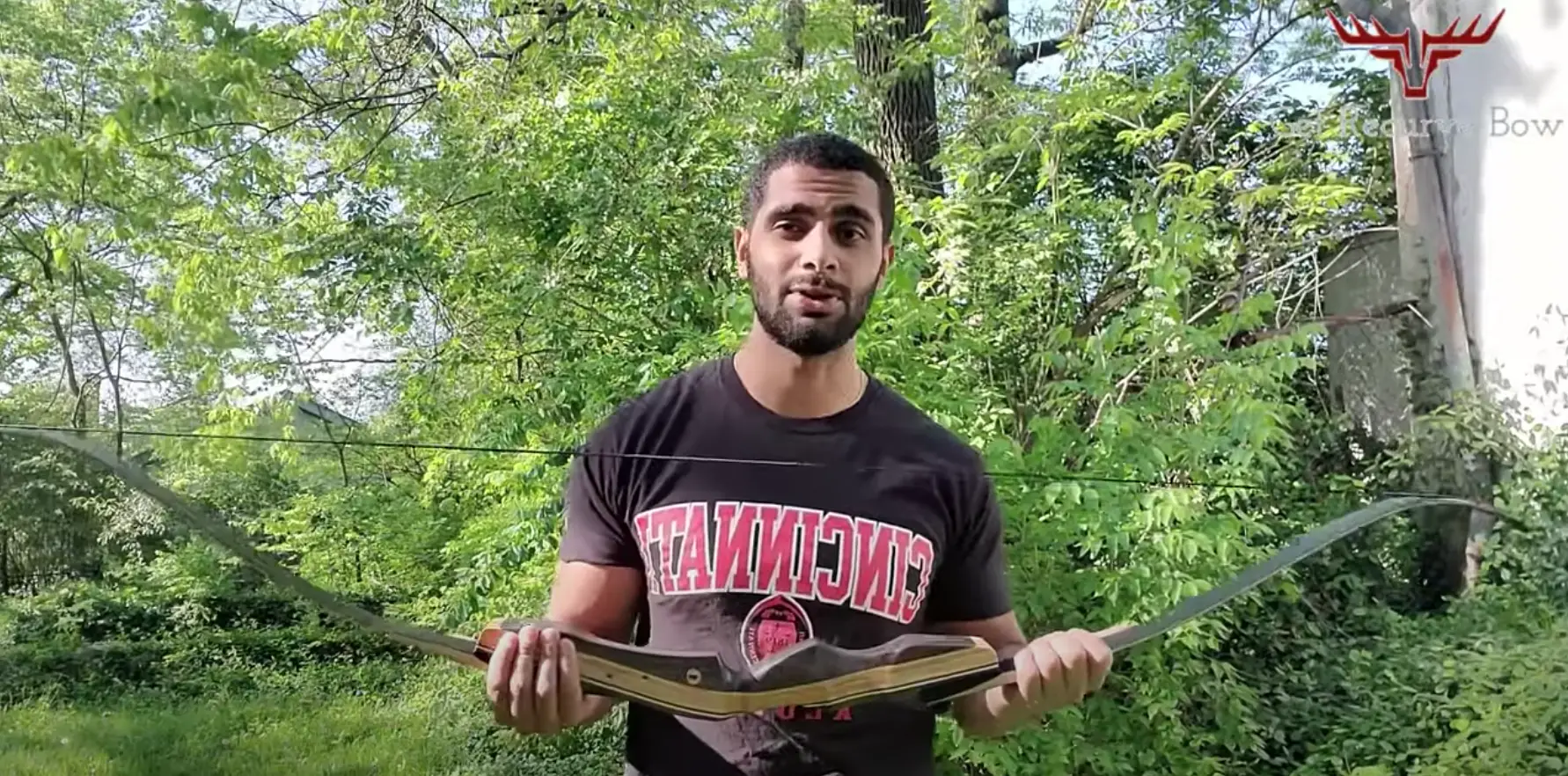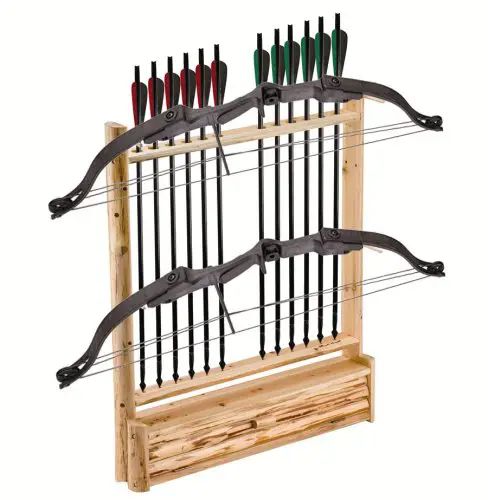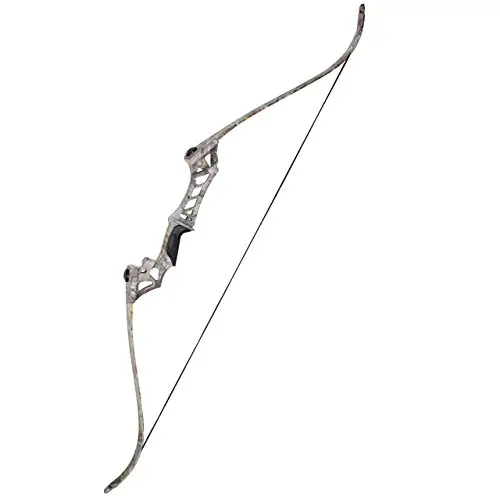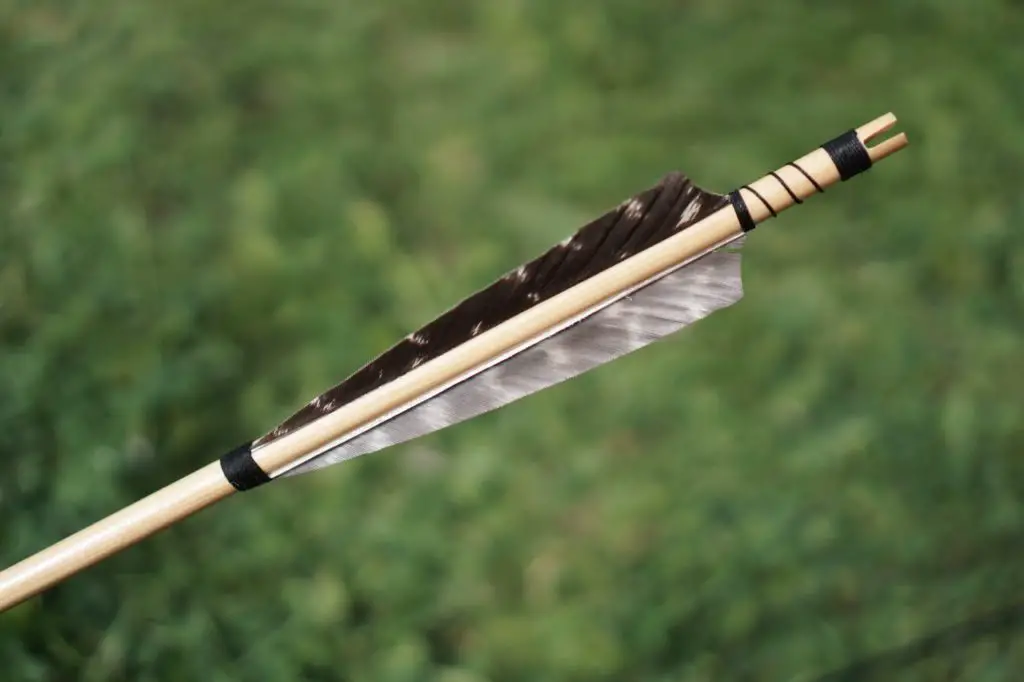We have purchased our recurve bow. We have a riser, a set of limbs and a string. They will shoot an arrow, but you may struggle to hit a target. To help us in our archery adventure we can look at adding recurve bow upgrades to make it more accurate, provide more consistency and higher scores. For some archers, this will equate to more fun.
We could look at the riser and limbs and upgrade to a top-of-the-range set-up (Riser and Limbs), that can cost thousands of dollars, but unless you are a “top archer” your bow will most probably “outshoot” your ability.
So where to start with adding up-grades? I feel the most important items to upgrade are those that are in contact with the item we are shooting. The arrow. What on our bow is in contact with the arrow as we shoot? To begin with, let us look at how the arrow sits on the bow.
Upgrading Recurve Arrow Rest
Like most bows, recurve bows use arrow rests. The simplest form of arrow rest is a shelf on the riser that has a piece of felt or fur attached to it. This is not adjustable, and we cannot do anything to it to help with our shooting.
A starting point in upgrading this would be to look at a stick-on, plastic rest that also provides a small plastic tab to act like a Cushion Plunger. A Hoyt Super Rest is a perfect example of this. Once it is stuck on it cannot be adjusted so needs to be placed in the correct position.
These rests are good enough to be used by archers at the Olympics.
If we want to upgrade, there are two other types of rest we can look at getting. One is a stick-on rest that is adjustable and has magnets in it to help with it clearing the arrow when the arrow is shot, the other is a bolt-on, wrap-around rest and does what it is called. It wraps around the rest and is bolted onto the riser through the “Berger hole”.
Both of these rests are adjustable and by that, it means that the arrow can be moved up or down and in or out from the riser. Why do we want this? It all comes down to tuning the arrows to the bow, so they fly straighter and hit where you want them to consistently.
Adding Recurve Bow Plunger
The next recurve bow upgrade is a plunger. The item that we can add has a few different names. The most common is Cushion Plunger or Button. If we take a quick look back at the Hoyt Super Rest, we will notice that the arrow is held away from the riser and on some there is a small soft plastic tab that acts the same way as a plunger.
All a plunger does for us is act like a small shock absorber. It prevents the arrow, when shot, from hitting the riser. When you shoot an arrow, it bens from the force of the string pushing it. We must have the correct Spine arrow to begin with, however, all recurve bows, when shot, the arrow will bend.
The plunger is designed to allow for some bending of the arrow but protects both riser and arrow from damage. A spring inside the Plunger, or in some cases magnets, act as the shock absorber and these can be adjusted for fine-tuning of the bow, allowing for greater accuracy. Some plungers come with extra springs to give a greater range of adjustability. The plunger is attached through the riser by a threaded hole and can be used to also hold on a wraparound arrow rest.
Upgrading Recurve Bow String
The only other part of the bow that touched the arrow and can affect how the bow shoots is the string.
Bow strings can be made from a number of different materials and by upgrading the string material, the bow will shoot differently. Materials in use range from “Fast Flight”, “8125”, and 8125G just to name a few.
Many of the differences come down to how the string stretches. Fast Flight is the oldest of the named materials. Is it not as good as the rest? Well the Korean National team uses this material and with this team being one of the best in the world, well, it’s a good string.
8125 and 8125G are similar but the 8125G version has extra material added, so to reduce stretch. I have found this quite “harsh” when shooting, but it will all come down to feel for the archer. Also, the speed at which these materials move and shoot the arrow varies. If you can have the arrow moving faster, but keeping the same draw weight, you will be more accurate. Newer materials do this.
Of course, you may want to upgrade your string to color co-ordinate your setup. This may not seem a big thing, but archers like to have a matching setup.
Adding/Upgrading Bow Sight
The next recurve bow upgrade is the item that will affect your accuracy the most. We are talking about a bow sight. All a sight is doing is allowing the archer to use a couple of points of reference that are separated, the string the sight pin and the target itself, and allows the archer to “line up” and take the shot.
The most basic form of sight you can add to the bow is a pin that is attached to your riser like the SOOHUPET T-Shaped Sight. If we look at the next step on upgrades with sights, we can look at in-expensive sights that can be adjusted up and down to allow for shooting at different distances. These can be produced out of either plastic or metal. By increasing the amount we are willing to spend, we can move on to highly adjustable sights that are “Micro” adjustable up and down, side to side, and in and out. These expensive sights can be made from lightweight metal alloys or pure carbon.
Another upgrade with the sight is the actual item we look through when aiming. That is the sight pin. Again, there are many different sight pins that are available, and the archer will need to figure out which they prefer.
Usually when starting out an archer will use a cheap plastic sight pin, but will want to upgrade to something more suited to their eye. These can be small circles with a cross hair, or a dot in the center, however, recently top archers have been using pins that use a larger circle and have either a non-magnifying lens with a dot (World archery rules dictate that Recurve sights are not allowed to have any magnification to the lens, unlike compound bows where it is allowed) or with an Optic fiber. This upgrade is subjective and will be what the archer prefers to shoot with.
Purchasing a Stabilizer for your Recurve Bow
We will now look at an upgrade that will allow the archer to hold their bow as steadily as possible. We are talking about recurve bow stabilizers. If we think about a Tightrope walker. They usually carry a long pole. This allows them to balance as it takes a lot of force to move the ends of the pole. Therefore, the walker stays very stable.
So, if we can add a long pole to the riser, it will take a lot of force to move the riser in the archers’ hand. If we add weights to the rod, it will allow the archer to hold the riser even steadier.
The further away we can place the weight from the riser the steadier it will be. Most stabilisers today are made from carbon. This ensures the weight is kept down.
If the bow setup with all upgrades added to the bow, were too heavy, the archer would tire quickly and could also cause injury. Apart from the long Rod that sits at the front of the riser, an archer can upgrade again by adding side rods that help to reduce Torquing of the bow (Turning) and again help the archer to be more accurate.
The next upgrade to our setup will make the bow feel smoother when shot and even quieter. The addition of Dampers to the riser, limbs, and stabilizers reduces the amount of vibration produced by the bow.
Recurve bows, due to their limbs and how the act, plus the types of materials used, vibrate. This vibration can be felt by the archer through the riser and also heard as well. A “loud” bow is usually untuned and does not shoot that well. If the string length and material are correct, and the bow makes a loud noise when shot, dampers may be needed to reduce the vibration.
If you are using stabilizers, dampers are usually used at the ends of the rods, due to the vibrations moving down the rods. The use of carbon also helps with damping as it acts as a damper. Placing a rubber damper on the limbs and riser with help greatly with excess vibration and quieten the bow.
Another form of damping is the use of string silencers. These are added to the string of the bow and once again reduce the vibration caused by the string. They are great for certain types of recurve bow but a downside is that it slows the string down, and therefore the speed of the arrow.
So far, we have added quite a lot of items to the bow that helps the archer to be more accurate, allow them to progress and the most important thing, make the bow setup look fantastic. However, the final upgrade we will look at is a small item, once again made from either metal or carbon that can have one of the greatest effects on the archer’s accuracy.
Upgrading Recurve Bow with a Clicker
This item is mainly used by Olympic recurve archers but can be used by others. This item is a clicker. A clicker is a piece of equipment that acts as a draw length check. If we take a quick look at Compound bows, they are the most accurate form of bow due to using a release aid that ensures the string move in a straight line and because the draw length is set and cannot go past a certain point.
With a recurve, the archer can draw the bow and keep going until the arrow falls off the rest. If we can release the arrow at a given point on every shot, the archer will be consistent and more accurate.
A clicker allows this. It is bolted to the riser and the arrow is allowed to slide under it. When the arrow slides away from it, the clicker springs back to the riser, makes a click sound as it hits and on hearing the click, the archer knows that it is the correct time to release the string and shoot the shot. It is very simple and works extremely well. However, the archer does need good technique when moving onto a clicker.
We recommend the Bicaster Decut Recurve Bow Clicker.
As you can see, there are a number of upgrades you can do to your bow. Will they help the archer to progress? From my own experience, I would say yes.
One thing to think about when upgrading is cost. An archer could spend many thousands of Dollars purchasing upgrades. Do you need to get the most expensive upgrades to begin with? No, you do not. There are many cheap sights that are highly adjustable. Stabilizers can be purchased cheaply and remember just start by adding a front long rod before starting to add side rods and extra weights.
Cost is one thing, but the extra weight could injure the archer if there are not ready for it. Find a sight pin you like and can use well. If your bow is very loud and vibrates a lot, dampers will help but get someone who knows bows to take a look at your setup in case something is wrong.
And of course, with these upgrades, make sure your setup looks good to you. As we can see here is my nice Yellow and black setup.

Archery is my hobby & I usually hunt and play on weekends and after work. It’s a passion since I was very young and I love writing about it as well to continuously learn more and share the love of archery with others!





